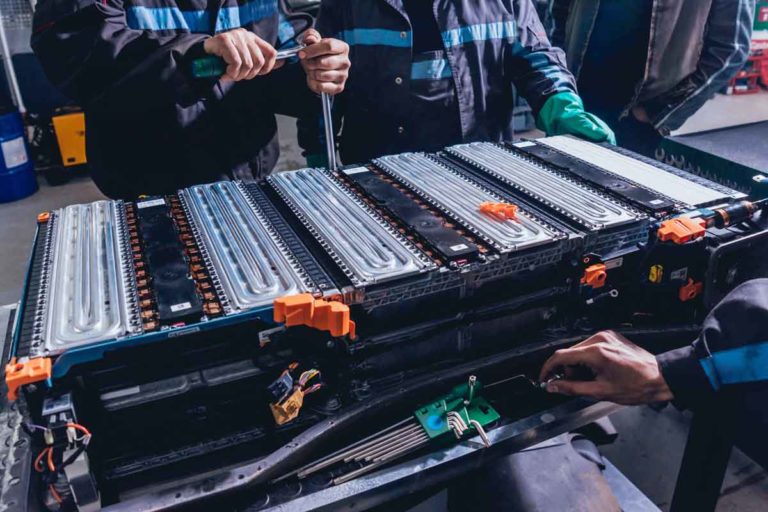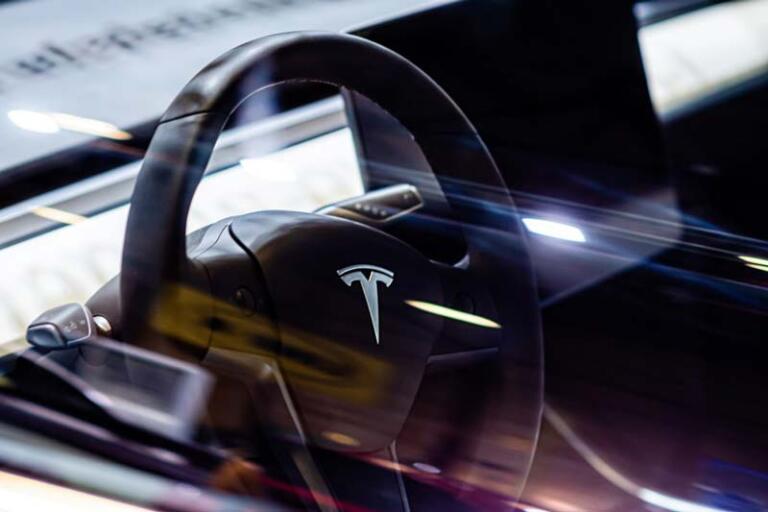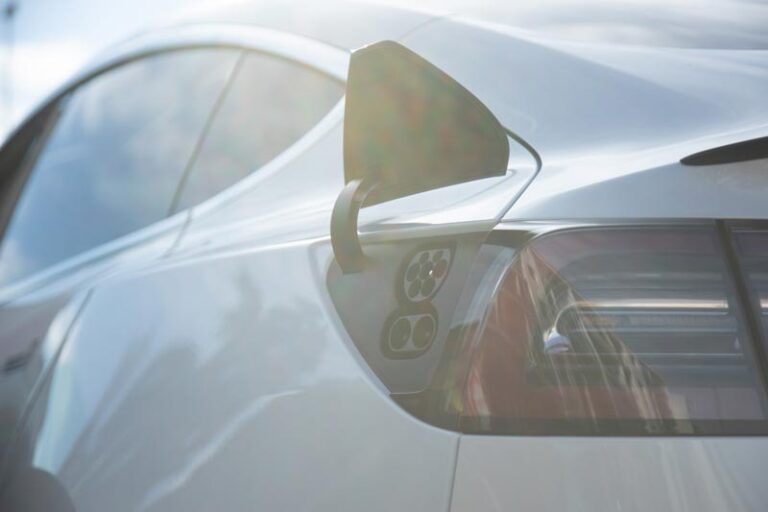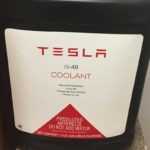It seems that every now and then a Tesla is shown burning, with 20 firetrucks trying to extinguish the neverending flames. But this is sensationalism at its best. If it happens once, it gets blown out of proportion. So, can Tesla batteries overheat and catch fire?
Tesla batteries can overheat but seldom do. The cooling system is well-optimized and uses fluid-glycol coolant. Driving at extreme speeds and high temperatures will increase the risk of overheating. Charge at and to optimal levels to protect your battery long-term. This also prevents overheating.
Check out the rest of the article for further insight into the matter.
- Can Teslas Overheat?
- How Often Do Tesla Batteries Overheat?
- Reasons Why Tesla Batteries Overheat
- Risks Associated With Overheating Batteries
- How To Eliminate or Reduce Overheating Issues
- Frequently Asked Questions
- Can I Leave My Tesla Plugged in Overnight Without Worrying About Overheating?
- What Is Tesla Dog Mode?
- How Often Should I Check My Tesla's Battery Health?
- Is Overheating More Likely During Extreme Weather Conditions?
- What's the Risk of a Tesla Battery Catching Fire Due to Overheating?
- How Long Do Tesla Batteries Typically Last Before They Need Replacement?
- What Should I Do If I Suspect My Tesla Battery Is Overheating?
- How Does Tesla Respond to Overheating Issues?
- Can Extreme Speed Driving Affect Battery Performance?
- Is It Safe to Modify Charging Presets to Allow Maximum Capacity?
Can Teslas Overheat?
Tesla batteries can overheat. High temperatures have a negative impact on electric car batteries, and Teslas are no exception. Tesla batteries can reach temperatures of 40 degrees Celsius (104 degrees Fahrenheit), and if they are not properly cooled, they can overheat and cause you to have a very bad day.
When designing electric car batteries, one of the primary considerations is whether an efficient and effective cooling system is in place. Tesla uses lithium-ion batteries to power their vehicles, which are more efficient and have a greater storage capacity the hotter they become.

Luckily, Tesla uses an efficient fluid-glycol coolant to prevent overheating. However, if the cooling system malfunctions, the battery on your Tesla will be damaged by the resulting high temperatures.
How Often Do Tesla Batteries Overheat?
The good news is that the risk of your Tesla battery overheating is very low. While there are some instances where the Tesla battery can overheat, Tesla has incorporated a highly efficient thermal management system to cool your battery packs and prevent overheating.
In the past, Tesla has had significant issues with overheating batteries, but the battery and cooling technology have come a long way in the last few years. This means that it is unlikely your Tesla battery will overheat unless there is a fault in the battery modules or a malfunctioning thermal management system.
In fact, the Tesla battery system is the most advanced commercially available battery technology today. The table below shows the pros and cons of the Li-ion battery system available on the Tesla models.
| Pros | Cons |
| Long lifespan | Lose capacity with age and use |
| High energy efficiency | Environmental conditions such as cold and hot temperatures accelerate degradation over time |
| High heat tolerance |
Reasons Why Tesla Batteries Overheat
What causes a car battery to overheat? The main reason why your Tesla may overheat is a fault in the cooling system/thermal management system. But there are a few other factors that could also cause overheating and damage to the batteries.
Overcharging Can Make Your Battery Too Hot
When it comes to charging your Tesla, you don’t want to give it 100%. Less is more to your Tesla battery.
Tesla has several safeguards to prevent overheating, including charging presets, which typically only allow you to charge your car up to 90%. However, you can overheat your battery if you adjust these presets to maximum capacity and leave your car plugged in with a high voltage charger.
Even with a cooling system in place, your Tesla’s battery packs heat up during charging, increasing capacity as they store the electric energy.
If you leave your Tesla plugged in with a high-voltage charger, the battery packs will continue to heat up and may exceed the optimal temperature range, causing overheating.
On a similar note, I wrote a related article where I discovered if and how much heat affects the range in Teslas. Check it out!

Extreme Weather: Hot Or Cold
Have you ever walked outside on a hot summer day and immediately felt like you were going to melt? Or have you also gone outside in the middle of winter and your fingers were so cold you couldn’t even text? That is how your Tesla battery feels if it gets too hot or too cold.
The Tesla batteries are sensitive to both extreme cold and hot weather. Extremely high or cold temperatures may cause chemical changes inside the battery packs, and these changes can drain your battery and speed up degradation.
If your Tesla battery degrades due to these chemical changes, then there is a risk that these batteries may overheat or be short in high-temperature conditions. This risk is exacerbated when two or more of these risk factors come together.
You can check out the video below from Ben Sullins to learn more about how the weather can affect your Tesla battery:
Risks Associated With Overheating Batteries
Overheating can be detrimental for all cars, but overheating batteries is a dangerous issue specifically for electric cars. This is why Tesla has taken several steps to enhance its battery management systems. Typically, if your battery overheats and malfunctions, the battery will stop working due to the damage.
However, overheating batteries can be a fire hazard. One of the main issues associated with Tesla Models in the yesteryears is that they would spontaneously catch fire when the battery packs overheated.
Although some of these concerns have been assuaged by the electric vehicle manufacturer’s innovation in battery pack technology and cooling systems, a 2020 article in the Washington Post revealed that while rare, Teslas can burst into flames when the battery packs overheat. And no one wants a Tesla that is on fire.
These spontaneous fires are because lithium-ion battery systems can build up extreme heat. This, coupled with the chemical composition in these batteries, can result in high-intensity fires that can last more than 24 hours and are difficult to put out.
How To Eliminate or Reduce Overheating Issues
To resolve overheating in Teslas, it is crucial first to address the risk factors that cause overheating. You can reduce the risk of battery overheating by keeping in mind the following key points:
Replace Degraded or Old Battery Modules
It is vital to replace old Tesla battery packs. Your Tesla battery degrades over time. According to a Tweet by Elon Musk, the average lifespan for the Model 3 battery modules is between 300,000 to 500,000 miles (482,803 to 804,672 kilometers), which is equivalent to about 1,500 cycles.
If you’ve had your Tesla for a while or drive it on long commutes, it may be a good idea to check your mileage and get the old battery replaced.
Charge Your Tesla to 80 or 90% to Avoid Overcharging
Tesla has included several presets for its vehicles that prevent you from overcharging your battery. Accordingly, by default, Tesla only lets you charge your battery to 90% to enhance the battery’s longevity while also enhancing energy efficiency.
While you can change these settings to allow maximum charging, I recommend charging your Tesla to 80% or 90%. This will help prevent overcharging and, in theory, protect your battery against accelerated degradation or overheating.
Tesla recommends avoiding both very low and very high charging states because these states significantly strain the battery cells from an electrical and physical standpoint.
Avoid Using High-Voltage Chargers Frequently
Tesla also recommends avoiding extremely high charging rates. Frequent use of high-voltage chargers harms battery life and increases the risk of overcharging. When possible, it is best to avoid using the high-voltage charger and stick to the recommended 240-volt charger.
Keep Tabs on Your Tesla’s Battery Health
As previously discussed, one of the major causes of battery overheating is a fault in the thermal management unit, which will undermine the charging process. You should therefore monitor your Tesla battery health.
The TeslaFi app is an excellent and easy way to do this. This app provides helpful information about your car, including its charging capacity, battery health, and other data based on data recorded over time.
Frequently Asked Questions
How Does Tesla Respond to Overheating Issues?
What Should I Do if My Tesla Battery Overheats?
Can I Leave My Tesla Plugged in Overnight Without Worrying About Overheating?
Leaving your Tesla plugged in overnight is generally safe due to the built-in charging presets. Tesla has designed these presets to prevent overcharging and overheating.
The default settings or charging to 80-90% are recommended to optimize your battery’s health. However, always ensure that your charging equipment is in good condition to minimize risks.
What Is Tesla Dog Mode?
Tesla Dog Mode is a specialized feature designed to ensure the safety and comfort of pets left inside a Tesla vehicle while their owners are temporarily away. This innovative feature allows Tesla owners to create a suitable environment for their pets, particularly dogs, by regulating the interior temperature and providing clear communication to concerned passersby.
Here’s how Tesla Dog Mode works:
- Climate Control: When activated, Dog Mode maintains a comfortable temperature within the car, ensuring it doesn’t get too hot or too cold for your pet. It prevents extreme temperature fluctuations, addressing one of the primary concerns when leaving pets in vehicles.
- Display Information: Tesla vehicles equipped with Dog Mode display a message on the center touchscreen. This message typically reads, “My owner will be back soon. Don’t worry!” It serves as a reassuring message to anyone who may approach the car, indicating that the pet is safe and the owner is aware of their presence.
- Continuous Operation: Dog Mode continues to operate even when the vehicle is parked and unattended. This means that if you need to run a quick errand or dine at a restaurant, you can leave your pet in the car without worrying about their safety or well-being.
- Safety for Pets: By using Tesla Dog Mode, pet owners can ensure their furry companions remain comfortable and secure. It also helps address concerns about the well-being of pets in hot or cold weather conditions, making it a valuable feature for pet lovers.
Tesla’s commitment to pet safety and comfort through features like Dog Mode highlights the brand’s dedication to innovation and user experience, catering to the needs of both Tesla owners and their beloved pets. It’s essential to use Dog Mode responsibly, only when necessary, and to comply with loca
How Often Should I Check My Tesla’s Battery Health?
Checking your Tesla’s battery health regularly is a wise practice. You can conveniently monitor it consistently using apps like TeslaFi, which provide valuable insights into your car’s charging capacity, battery health, and other essential data based on historical records.
If you notice significant degradation or unusual behavior, consider scheduling a checkup with a Tesla technician.
Is Overheating More Likely During Extreme Weather Conditions?
Extreme weather conditions, whether scorching heat or freezing cold, can affect your Tesla’s battery. High temperatures can accelerate battery degradation, while extremely low temperatures can impact battery performance. It’s important to be mindful of these weather factors when charging and operating your Tesla.
What’s the Risk of a Tesla Battery Catching Fire Due to Overheating?
While it’s a rare occurrence, overheating can potentially lead to a fire risk in Tesla vehicles. Tesla has made significant advancements in battery technology and cooling systems to mitigate this risk. Nevertheless, it’s essential to address any concerns related to overheating promptly, follow safety guidelines, and keep your vehicle well-maintained.
How Long Do Tesla Batteries Typically Last Before They Need Replacement?
Tesla batteries are engineered for durability and longevity. On average, they can last between 300,000 to 500,000 miles (482,803 to 804,672 kilometers), equivalent to approximately 1,500 charge cycles.
To extend your battery’s life, consider replacing old or degraded battery modules when necessary, based on your mileage and usage patterns.
What Should I Do If I Suspect My Tesla Battery Is Overheating?
If you suspect that your Tesla’s battery is overheating, it’s crucial to take immediate action. Cease charging and contact Tesla’s support or service center for assistance. Continuing to charge your vehicle in high-temperature conditions can exacerbate the issue, potentially leading to more severe problems.
How Does Tesla Respond to Overheating Issues?
Tesla offers a convenient solution through the Tesla app, allowing you to schedule a mobile service appointment. When you suspect an overheating issue or any other battery-related concern, you can use the app to select a preferred location and time for a Tesla technician to diagnose and address the problem on-site.
Can Extreme Speed Driving Affect Battery Performance?
Driving at extremely high speeds, particularly in hot weather, can indeed increase the risk of your Tesla’s battery overheating. Excessive speed can generate more heat within the battery system.
Also, all lithium ion batteries are degraded by high drain.
To prevent overheating and maintain safe operation, it’s essential to adhere to recommended speed limits and drive within the vehicle’s specified performance parameters.
Is It Safe to Modify Charging Presets to Allow Maximum Capacity?
While Tesla provides the option to modify charging presets to allow maximum capacity, it’s generally advisable to adhere to the default settings, which limit charging to 80-90%.
Altering these settings, especially when using high-voltage chargers, can elevate the risk of overcharging and overheating. Following Tesla’s recommended charging practices helps protect your battery against accelerated degradation and potential overheating issues.
Check out these 20 great gift ideas for yourself or a Tesla fanboy.
Contact Us if you have any questions or queries.








